Do you ever wonder how to incorporate sensory play into teletherapy sessions with your students when you can’t physically be with them? In this episode, I share six different sensory play ideas that you can include in your therapy sessions!
6 Ideas for Incorporating Sensory Play into Teletherapy Sessions:
1. Water Play:
There are so many different ways to incorporate water play into your teletherapy sessions. Provide your student’s parents with a list of materials you want them to gather, but let them know they do not need to set it all up. Take this time to work on following directions with your students to get the water play ready.
2. Play Dough:
Every child loves play dough, and while play dough is fun, it is also great to use to target speech and language goals!
If your student does not have play dough on hand, your student’s caregiver may be able to make a homemade version; there are many easy recipes that you can send them. Here’s a blog post with a great recipe to make homemade play dough!
3. Sensory Bins:
There are several different types of sensory bins you can incorporate into your teletherapy sessions when engaging in sensory play. One fun and extremely easy one that is great for the winter time is snow! If it is snowy where your student lives, then all they have to do is gather some snow and put it in a bin. If there isn’t real snow where the student lives, they can make their own. Linked below is a fake snow recipe you can send the student for your teletherapy sessions.
4. Incorporating Sound:
Tapping into the sense of hearing, you can also incorporate sound activities into your teletherapy sessions. One way to do this is finding books that have sound effects included. You can even extend this activity by reading the book during the first session with your student and then brainstorming together to think of items you can use to make these sounds. Then have the student get all of these items ready for the next session to use when reading the book again.
5. Sensory Break Cards:
There are many times during therapy sessions, especially teletherapy sessions, where students just seem to need a break. Gathering sensory break cards to use in sessions may support improved regulation and attention. You can create cards that have various movement-based activities that the student can partake in if they need breaks during the session or if you recognize that they need to move around. Here is a link to some sensory break cards available on The Digital SLP’s website.
6. Digital Sensory Play:
I have included a link below to a digital sensory play activity on The Digital SLP’s site. This activity also works towards targeting speech articulation skills if you have a student working on various speech sounds. Similar to playing in an actual sensory bin, this activity has you drag and drop beads to the ground in order to find hidden objects. Have your student work on producing their target speech sounds as well as labeling the items they find.
Now that you have some fun ideas on how to set up sensory play activities with your students in teletherapy sessions, what are you most excited about trying? Share your comments below! We want to hear your ideas and your favorite sensory play activities that you have incorporated into your therapy sessions.
Links & Resources
- The Digital SLP Membership
- Brain Breaks/Sensory Break Cards
- Homemade Recipe for Play Dough
- How To Make Fake Snow
- Digital Sensory Play
Full Transcript of Podcast: Sensory Play with Teletherapy
Episode 87: Sensory Play with Teletherapy
You're listening to the Speech Space Podcast, a podcast full of tips and resources for SLPs. I'm your host, Jessica Cassity, and this is Episode 87.
Today, we're going to be talking about ways that you can incorporate sensory play into your speech therapy sessions through teletherapy. But before we get started, I did want to give a heads-up that this podcast is brought to you by The Digital SLP membership site, which is a site that features time-saving interactive digital resources that are all teletherapy platform-friendly. You can learn more or sign up for a free trial by heading on over to thedigitalslp.com/digitalslp. All right, let's go ahead and get started.
We all engage in many different sensory experiences from the day that we're born. Learning about our world through touching and smelling, hearing, tasting, and seeing. Using various sensory experiences within our speech therapy sessions can support our students' brain development, along with speech and language growth. Sensory play is the act of stimulating one or more of the child's senses at a time during play. Finding activities to incorporate multiple senses will support our student's ability to maintain a regulated state as well as learn and retain more information. A few things to note when incorporating sensory play in teletherapy is to first communicate your plans with the parents or caregivers prior to the start of the therapy session. You wanna give them a heads-up as far out as possible so they can do the planning on their end as well. Having a parent join the student during the session is also equally helpful, especially for helping with setting up and cleaning up at the end as well. You also want to remember that you can always turn regular home items into child sensory toys. So don't feel like you or the parent need to go out and purchase anything new. So today, we're gonna go ahead and we're gonna talk about six different sensory play ideas that you can incorporate within your teletherapy sessions.
So the first type of sensory play that we're going to discuss is water play. There are so many ways to incorporate water play into your teletherapy sessions. So what you can do is provide your students, parents, or caregivers with a list of materials that you want them to gather, but let them know that they don't need to set it all up. Take this time to work with your student on following directions to get the water play ready. So giving steps like get the bin, fill the bottle with warm water, turn it off, squirt three pumps of soap. Those are all, some really basic directions that are going to be incorporated into the act of the water play. Once everything is set up, you can adapt the water play to target your student's goals. Is your student working on action verbs or maybe word imitation? You can demonstrate actions and model words during the play. Do you have a student who's working on gestures, words, or phrases to make requests, then for those, you could have the parent hold on to various objects or tools that the student can use in the water and then have them request those items when it's time. If you have have a student working on expanding play sequences, you could have the caregiver set up an activity to have the student put cars in the water, scrub them with soap, and then dry the cars. So all really fun activities that are working on speech and language goals, while at the same time, utilizing water play for more sensory input.
The next idea is play dough. You know, every child loves play dough. At least most of them do. And while it's fun, it's also great, of course, as we all know, to target speech and language goals. If your student does not have play dough on hand, there are actually a lot of really, really easy recipes that you can send to your student's caregiver ahead of time. If they're able to get that done before the session. I will add in the show notes a link to a blog post that I published a few years ago with my favorite recipe for homemade play dough. You can work on imitating actions with play dough while modeling new vocabulary terms like roll, press, smash, smoosh, and push. If your student has access to play dough of different colors, you can work on making requests to ask for various colors, like I would like the red, or I would like more blue, please? You know, play dough is a great tool to use with pretend play as well. So you can create items for little figures, baby dolls, mini objects. You know, the sky is the limit in terms of what your students can sculpt with play dough, and then you as well, if you're on the other end, you could be modeling for your student. So, for example, your student could create a hat to put on and take off of the baby doll. Your student could also make pretend food like noodles or pizza and feed it to the baby doll. So those are some really fun ideas. And then also if your students working on following directions, you could provide your student with single or multi-step directions, depending on where they're at, using the play doughs. So, for example, you could say get the blue play dough and make a ball or something like before you get green, get the yellow to make a sun. So lots of different options with play dough. And like I said before, as most of us know who've used play dough in our speech therapy sessions, it's always a big hit.
All right. So the next topic we're gonna talk about is sensory bins. You know, there are several different types of sensory bins that you can incorporate into your therapy sessions when engaging in sensory play. I know we're all really familiar with using them in person with maybe dirt or noodles or water beads. One fun and extremely easy one that's great for the wintertime is snow. If it's snowing where your student lives and you know, you have an abundance of snow outside, then all they have to do is just gather some snow and put it in a bin. So that's a pretty easy one, but if you don't have real snow where you live, that's actually really easy to make your own. And I'm going to link in the show notes to a fake snow recipe that you can use for your therapy sessions, but it just includes a few simple ingredients like conditioner and baking soda. So it's really easy. But like I said, I'll go ahead and link that. Some ideas for how you might use this real or pretend snow in your session. You can add in new vocabulary like hat, gloves, boots, mittens, shovel, sled, freezing. You could have your student dressed in winter apparel to make it feel more realistic and have it, you know, be fun, especially if there's no snow where your students are. It might be fun for them to put on a winter hat or gloves, just to have a little, little bit of fun and pretend it's winter. You can have the student add in some drops of food coloring to turn the snow different colors. You could have them make requests of the color that they like to add before they get the food coloring. Again, this is something that you're going to be communicating in advance with the caregiver. You could have the caregiver hide rather objects in the snow to work on expanding utterances or vocabulary. And if you're working with an older student, then you could take turns giving each other clues about what you found hiding in the snow. So, you know, you could also participate right along with your student and have your own snow in front of you as well, so you can model throughout the session.
The next thing we're going to talk about is incorporating sound into your sessions. So tapping into the sense of hearing, you can also incorporate sound activities into your therapy sessions. So one way to do this is by finding books that have sound effects included. Something like "Going on a Bear Hunt" and for each sound effect, you can think of a way to create that sound. So, for example, maybe running a broom along the floor for the "swishy swashy" grass, or shaking water bottles for the "splash splosh" of the river. You could even extend this out even more and read the book during one session with your student and then brainstorm together about some items that you can use to make the sounds. And then you could have your students gather all of these items and have them ready for the next session to use when reading the book again. Another great way to incorporate sound, of course, is through song. So I am sure that many of you have your go-to songs that you like to use in your speech therapy sessions, whether you sing them for transitions or whether you pull them up on YouTube. But incorporating song is also great as well.
Let's talk about sensory break cards. There are many times during therapy sessions, especially teletherapy sessions, where students just seem to need a break. So gathering sensory break cards to use in your sessions may support improved regulation and attention as well. You can create these cards that have various movement-based activities that the student can partake in if they need breaks during the session, or if you recognize that they need to move around. Some ideas of movement-based activities might include things like jumping. You could even incorporate some of the song that we talked about before like Five Little Monkeys, and you could see if they have an area space that they'd like to jump and bonus points that they have a small trampoline in the area. Spinning is another one if your student seems to need more of stabular input, they could try spinning in an office chair or spinning in circles. And you can set up a following directions activity with that, where they spin in a few circles before following a direction that you give. Another idea is heavy work, like pushing a filled laundry basket, or doing a wheelbarrow across the room. Of course, they would need a caregiver to help with that. Yoga is also great. You can provide your student with some various yoga movements that they can imitate. And if you are a Digital SLP member listening, or if you are interested in learning more and signing up for the free trial, we do have some digital brain break cards that I will link to in the show notes as well.
Now let's talk about digital sensory play. I've included a link below to a digital sensory play activity on The Digital SLP site. This activity also works toward targeting speech articulation skills. If you have a student working on any speech sounds, it's similar to playing in an actual sensory bin. So you, you are not truly getting the sensory experience, but sometimes when you're working virtually and you're trying to get things together in a pinch, maybe the caregiver did not have time to set up the sensory bin. Then this activity is perfect to use as a substitute. So this activity, what it does is it has you drag and drop beads over to the side of the bin in order to find the hidden objects. So you can have your student work on producing their target speech sounds as well as labeling the items they find. They can also ask questions, or you can ask them questions about the objects that they find. They can describe the objects. So there are a lot of to different goals that you can touch on with those aside from just articulation.
All right. So now that you have some fun ideas on how to set up sensory play activities with your students in teletherapy sessions, I would love to know what you are the most excited about trying or what's working best for you in your teletherapy sessions. So feel free to send an email any time to jessica@thedigitalslp.com. I always love to hear from you, and I hope that you all have a wonderful week. Like I said, I will link to those things that I mentioned earlier in the show notes, so you can access those. You can always head on over to thedigitalslp.com/podcast to access all of the podcast and the show notes. You can also head on over to bit.ly/TSSEP87. That's a quick link way to get to the episode of today. But like I said, if you wanted to see all the podcast you can do so either on iTunes or you can also find us on the website, which is thedigitalslp.com/podcast. Now, like I mentioned, at the beginning of the show, this podcast is sponsored by The Digital SLP membership site. So if you would like to learn more about that, or sign up for a free trial head on over to thedigitalslp.com/digitalslp. All right. Thank you so much for tuning in, and I look forward to being back in a couple of weeks.


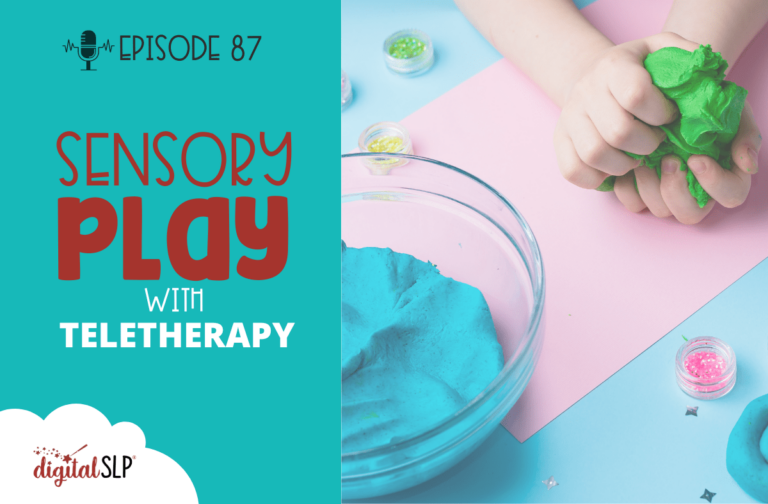



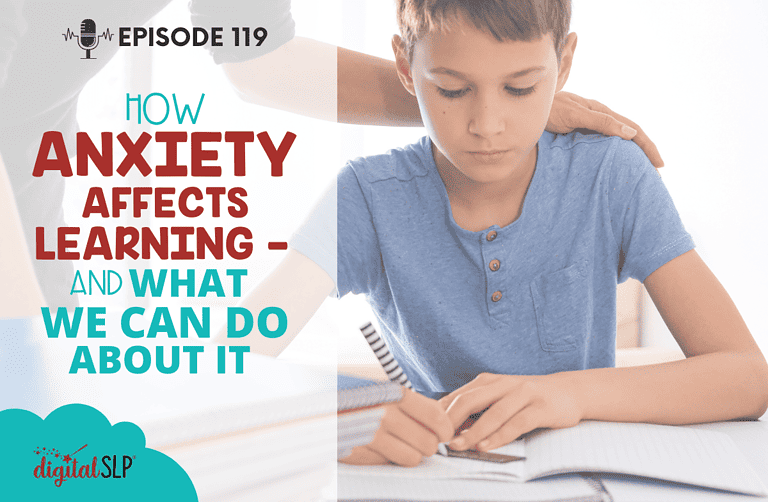
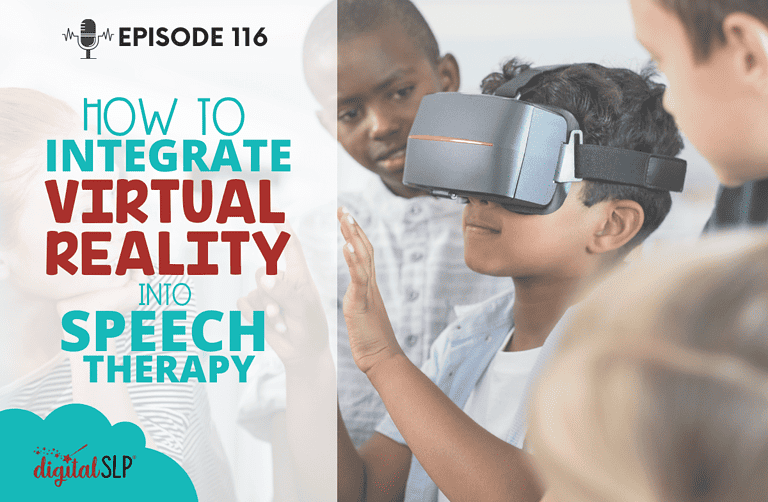
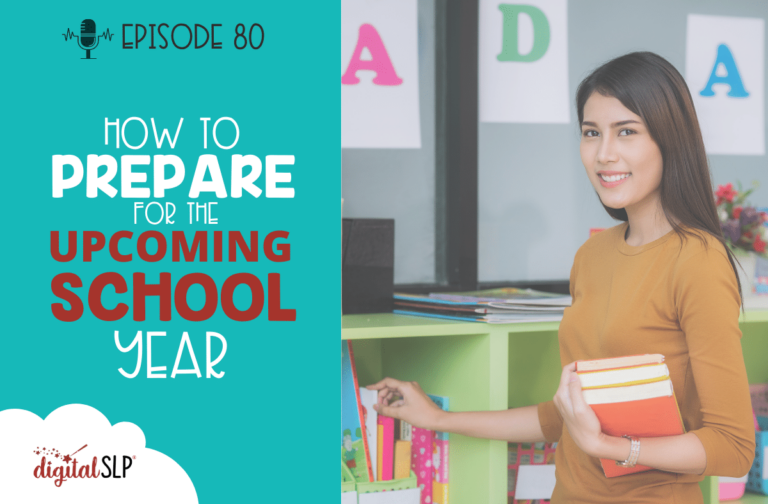
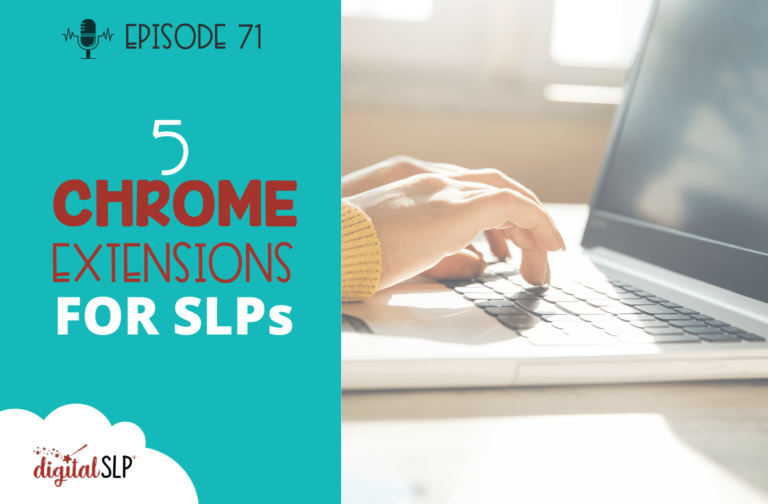
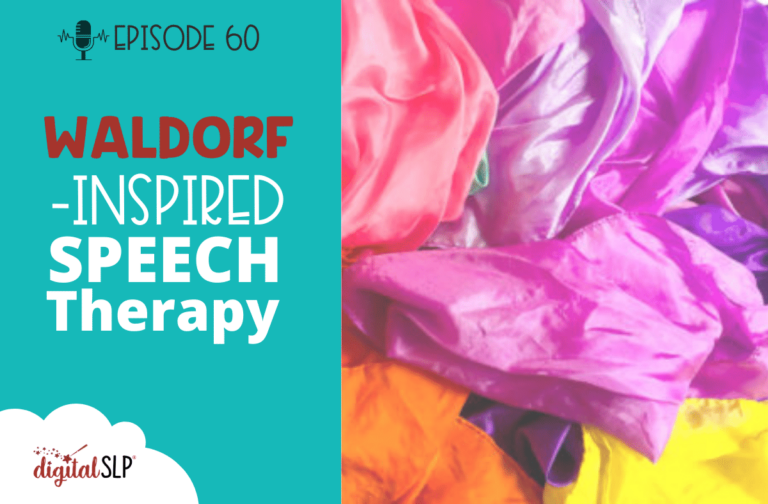
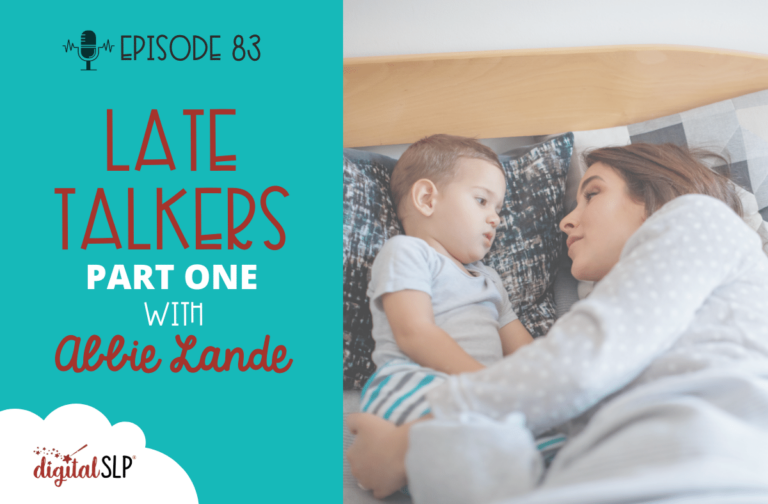

Recent Comments